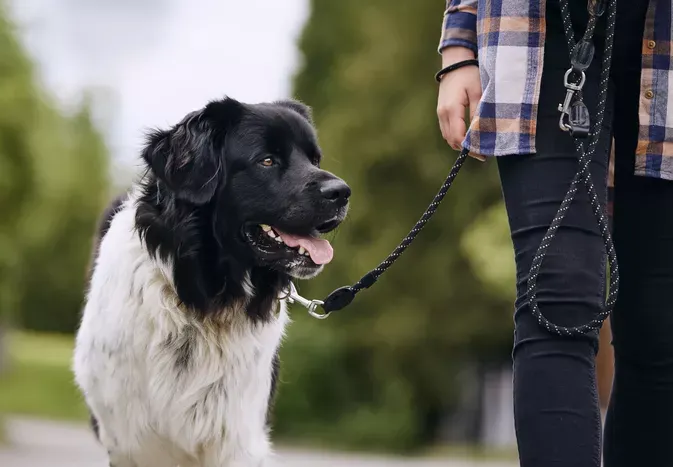Puppy and Baby Introductions
Updated on 04/26/24

A Comprehensive Guide to Introducing Puppies and Babies: A Journey of Tails and Tiny Toes
Introduction
Bringing a new furry friend into a family with a young child is an exciting yet daunting task. It's crucial to navigate the introduction process carefully to ensure a harmonious and safe coexistence. This comprehensive guide will provide you with the essential steps, tips, and real-life examples to make this important transition a success.
Step 1: Setting the Foundation
* Choosing the Right Dog: Consider your baby's age, temperament, and lifestyle when selecting a puppy. A calm and gentle breed, like a golden retriever or beagle, is often a good choice.
* Puppy Training: Teach your puppy basic commands (sit, stay, come) and proper socialization before the introduction. This will help establish boundaries and ensure a well-behaved dog around your baby.
Step 2: Gradual Introduction
* Separate Space: Initially, keep the puppy and baby in separate areas, allowing them to become familiar with each other's presence. Exchange blankets or toys to introduce their scents.
* Supervised Interactions: Gradually introduce brief supervised interactions. Let the puppy sniff the baby's feet or toes from a distance. If the puppy shows excitement or aggression, immediately end the interaction.
* Controlled Touch: Once your baby is comfortable, allow controlled touch. Guide the puppy's gentle nuzzles or licks on the baby's fingers or toes.
Step 3: Establishing Boundaries
* Safe Zones: Create designated safe zones for each family member. Establish a "puppy-free" area for the baby's naps and feeding, and a "baby-free" area for the puppy's play and rest.
* Supervision: Never leave the baby and puppy unsupervised together. Always monitor their interactions to prevent any potential mishaps.
* Teaching the Puppy "Gentle": Use a command like "gentle" to teach your puppy to be respectful of the baby's space. Reward the puppy with treats or praise for calm behavior.
Step 4: Ongoing Management
* Training and Reenforcement: Continue training your puppy and reinforce good behavior. If any issues arise, seek professional help from a veterinarian or certified dog trainer.
* Clear Communication: Communicate your expectations to your child. Explain the importance of gentle handling and respecting the puppy's boundaries.
* Adjustments as Needed: As your baby and puppy grow and develop, adjust your approach as necessary. Supervise interactions, respect safe zones, and continue to provide training and guidance.
Real-Life Example 1: Paws and Puddles
Sarah and her husband welcomed their first child, Emily. They also had a lively golden retriever puppy named Paws. Sarah followed the gradual introduction method, allowing Paws to sniff Emily's feet through a gate. Over time, supervised interactions were introduced, and Paws learned to lick Emily's toes gently. Sarah established a safe zone for Emily's naps, where Paws was not allowed, ensuring Emily's well-being.
Real-Life Example 2: Lily and Buddy
Jennifer and her 3-year-old son, Ethan, got a miniature schnauzer named Buddy. Jennifer used a command word, "gentle," to teach Buddy to be respectful of Ethan. She also supervised their interactions, especially during feeding times, when Ethan had food. Jennifer taught Ethan to share toys with Buddy and to give him space when he was resting.
Conclusion
Introducing a puppy and a baby requires careful planning, gradual interactions, and ongoing management. By following the steps outlined in this guide, you can create a harmonious and safe environment for both. Remember to prioritize your baby's well-being, train your puppy responsibly, and adapt your approach as your child and puppy grow. With patience, consistency, and a lot of love, your puppy and baby can become the best of friends, sharing countless tail-wagging and giggling moments.
Explore More Pets

Working Dog Breeds
All About Search and Rescue Dogs

Dog Treatments
Puppy Vaginitis: Signs, Causes and Treatment

Dog Adoption
After More Than 1,200 Days in the Shelter, Coco Goes Home

Basic Training
How to Train Your Puppy to Go on Potty Pads

Hybrid Dog Breeds
The Difference Between a Mutt, Mixed Breed, or Designer Dog?

Dog Treatments
Nail Problems in Dogs

Puppies
7 Reasons Why Two Dogs Are Better Than One

Basic Training
8 Things to Teach Your New Rescue Dog Right Away